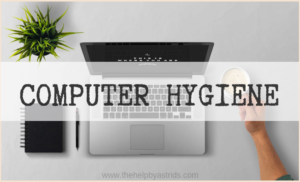 October 1 is special. It falls on a Monday and signals the start of another productive week. It also signals the start of the last quarter of the year and tells us that – fall is here! There’s another thing that makes October 1 extra special. October 1 is International Coffee Day. In honor of the work fuel that keeps countless shift workers, employees, students, and parents alive, here are 5 fun facts about the beverage we all know and love.
October 1 is special. It falls on a Monday and signals the start of another productive week. It also signals the start of the last quarter of the year and tells us that – fall is here! There’s another thing that makes October 1 extra special. October 1 is International Coffee Day. In honor of the work fuel that keeps countless shift workers, employees, students, and parents alive, here are 5 fun facts about the beverage we all know and love.
Coffee aromatherapy
The moment you hold that warm mug of coffee in your hands and that rich, coffee aroma wafts in the air, you immediately get the benefits of coffee. It’s that powerful! You don’t even have to drink it yet, to get its amazing benefits. Research shows that the smell of coffee and just being exposed to its aroma could reduce stress and instantly perk you up. You get all that sans the caffeine. In fact, this study shows that the smell of coffee “is enough to reverse the effects of sleep deprivation on the brain.” Coffee has 800 compounds, most of them are tied to the scent. And we all know that scent triggers memories, feelings, and connections. We may associate these with wakefulness.
Coffee for improved health
Did you know that coffee can help improve brain function and memory? Coffee has compounds that help prevent beta-amyloid build-up that may contribute to the onset of Alzheimer’s. Not only does it keep us awake, but it also helps our brain function better and helps improve memory. No wonder it is the go-to drink for students who are burning the night oil.
Coffee as a mood booster
This study that ran for a decade, found that “depression risk decreases with increasing caffeinated coffee consumption”. The secret – Dopamine. Dopamine stimulates the brain’s pleasure centers and is a substance associated with happiness and euphoria.
Coffee lifeline
Interestingly, coffee also reduces the risk of suicide. A study published in the Archives of Internal Medicine and The World Journal of Biological Psychiatry, reveals that “the risk of suicide among adults drinking 2-4 cups of coffee (the equivalent of about 400 mg of caffeine) a day was 50% less than the risk for adults who drank decaffeinated coffee or one cup or less of caffeinated coffee.” This could again be due to the fact that coffee stimulates the production of Dopamine, as well as Serotonin and Noradrenaline – all of which are feel-good substances. However, you should not self-medicate with coffee, as the same study shows that “drinking more than 4 cups of coffee didn’t drop the suicide risk lower.” So, the age-old saying stands true – take everything in moderation.
Coffee for beauty
Those coffees scrubs aren’t the only thing good for your skin. The antioxidants found in coffee also helps your skin look great, your hair shinier, and the chlorogenic acid compound in coffee stems retinal damage.
Who would’ve thought that this humble beverage could be so much more than a wake me upper? There are so many reasons to love coffee and now you know 5 more.
How about you? How do you like your coffee? We’d love to hear about it. Share them with us in the comments. Stay humble and hustle hard!
Written by Jaie O. The Help
 Ah, Microsoft updates…don’t you just love them? They take up a chunk of time and you don’t always like what they have changed – this time around. But, it is prudent to always update your OS, not to mention your antivirus. Keeping your devices running smoothly takes a lot of work. You’d have to defrag, run updates, keep your files organized, have a competent Antivirus, etc. These things will ensure that your machine will keep working long after you shelled out a crazy amount of money to get that powerful workhorse. If you’re lazy about taking care of your devices, an OS update and anti-virus update is the very least amount of maintenance you can do for keeping your data and your machines safe.
Ah, Microsoft updates…don’t you just love them? They take up a chunk of time and you don’t always like what they have changed – this time around. But, it is prudent to always update your OS, not to mention your antivirus. Keeping your devices running smoothly takes a lot of work. You’d have to defrag, run updates, keep your files organized, have a competent Antivirus, etc. These things will ensure that your machine will keep working long after you shelled out a crazy amount of money to get that powerful workhorse. If you’re lazy about taking care of your devices, an OS update and anti-virus update is the very least amount of maintenance you can do for keeping your data and your machines safe. A
A  Aside from the bed, in front of a computer is where we spend most of lives. Well, that’s very true today. CNN reports that the average American spends more than 10 hrs a day staring at a screen – with computer screens taking up an average of 7 hours of that time. That number is still growing.
Aside from the bed, in front of a computer is where we spend most of lives. Well, that’s very true today. CNN reports that the average American spends more than 10 hrs a day staring at a screen – with computer screens taking up an average of 7 hours of that time. That number is still growing.